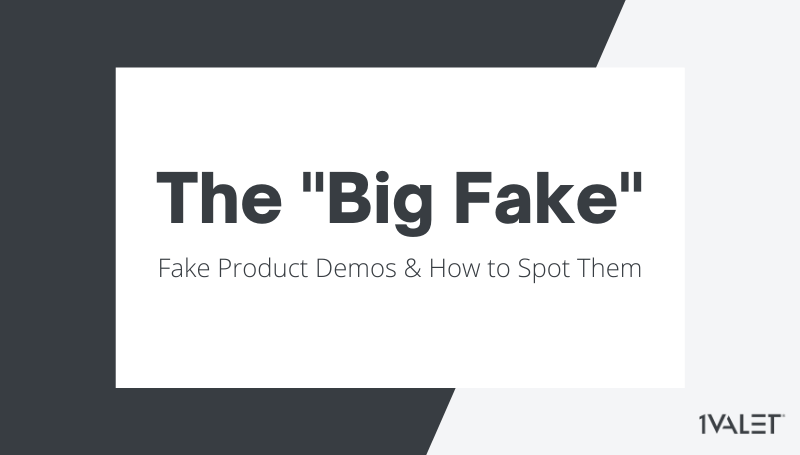“Fake” Product Demos – How to Spot Them and Save Your Money
- 03/31/2021
- 2 minute read
I hate to break it to you, but the product demos you recently saw might not have been real.
They might have looked real, but looks can be deceiving. No one wants to waste their time on Zoom (especially these days) attending a product demo for a tool they believe could solve their business needs, only to later learn it is fake. So before you sign that contract, it’s better to be able to identify and recognize the signs of fake product demos or clickable prototypes, especially if you work in an industry where the stakes are high.
At 1VALET, we build software for residents and property managers in the multi-residential space. When hosting a product demo, we do so in a live software environment. This means that we show potential and existing customers real software products that are available on the App Store and on the web.
Through our discussions with customers during these demos, we’ve realized that a lot of other companies are demonstrating clickable prototypes instead of real products, particularly where mobile apps for residents are concerned.
So What is a Clickable Prototype?
A Clickable Prototype is a visual representation of a user interface with some animated key states (e.g. a dropdown menu or scroll). It is created by linking a series of “screens” through the use of hotspots. It’s primarily used to demonstrate how a product feature could work. An important distinction is that with a clickable prototype there is no software code. Rather, they consist of a number of static jpeg or png files linked together.
There are many tools that allow companies to quickly put together clickable prototypes, such as Invision, Marvel and Figma.
Below is an example of a clickable prototype from Figma.

Real vs Fake – How Can You Tell?
Visually, the giveaway is that instead of a mouse cursor, a large, round, transparent shape appears when clicking through the design. See the example above. It’s hard to miss.
Another way to tell is whether or not you can find the app on the App Store. We’ve put together a list of additional questions you could ask to determine whether or not you are looking at a real or fake product demo. If the company hosting the demo hesitates to give you a direct answer, or a link to their product on the App Store, chances are, the product demo or component they are demonstrating is not a real product but a clickable prototype.
Questions to ask:
1 ) Where can I download your app?
2) Can you provide our team with credentials to try out your app?
3) When did you release it to the store?
4) Ask to see any area of the app they avoid clicking on, such as menu item or other functionality
5) Can we see the Android version (or iOS if showing Android)?
Oh, by the way, our team is not only comfortable with answering these questions (and anything else you throw at us), but we’ll even show you how our components are connected. You won’t be disappointed.
Book a Real Product Demo Today!


